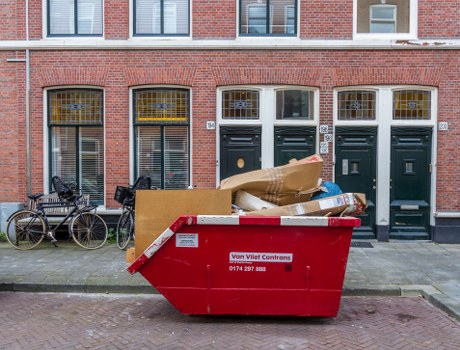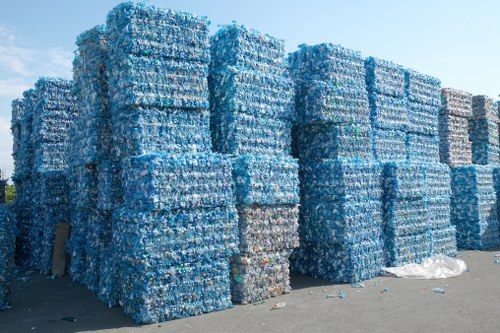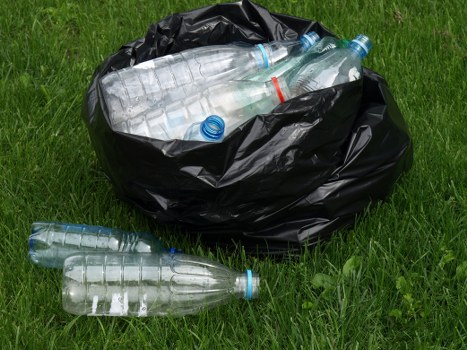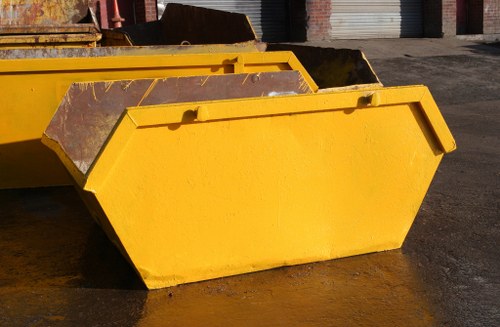Efficient Construction Waste Clearance in Sudbury

Construction projects, whether large or small, inevitably generate a significant amount of waste. Proper management and clearance of construction waste are crucial to maintaining a safe and environmentally friendly site. In Sudbury, the demand for professional construction waste clearance services has been on the rise, reflecting the city's growing infrastructure and development needs.
Effective waste clearance not only ensures compliance with local regulations but also promotes sustainability by reducing the environmental impact of construction activities. This article explores the importance of construction waste clearance in Sudbury, the processes involved, and the benefits of hiring professional services.
Sudbury's vibrant construction sector requires efficient waste management solutions to handle the diverse range of materials generated. From concrete and metal scraps to wood and packaging materials, each type of waste demands a specific disposal approach to minimize environmental harm and promote recycling.

The Importance of Construction Waste Clearance
Proper waste clearance is essential for several reasons:
- Environmental Protection: Ensuring that waste is disposed of correctly reduces pollution and conserves natural resources.
- Regulatory Compliance: Adhering to local waste management laws helps avoid legal penalties and project delays.
- Site Safety: Clearing waste maintains a safe working environment, preventing accidents and injuries.
- Cost Efficiency: Efficient waste management can reduce overall project costs by minimizing disposal fees and optimizing resource use.
In Sudbury, these factors are particularly important due to the city's commitment to sustainable development and environmental stewardship.
Construction waste clearance plays a pivotal role in achieving these objectives by systematically managing the removal and recycling of waste materials.

Types of Construction Waste
Construction waste encompasses a wide variety of materials, each requiring specific handling procedures:
- Concrete and Masonry: Often recycled into new construction materials.
- Metals: Recyclable and valuable for manufacturing industries.
- Wood: Can be repurposed or used for energy production.
- Plastics: Requires specialized recycling processes.
- Packaging Materials: Includes cardboard, foam, and other disposables.
- Hazardous Materials: Such as asbestos or chemicals, which require careful disposal.
Understanding the types of waste generated is crucial for implementing effective clearance strategies and promoting recycling initiatives in Sudbury.

Construction Waste Clearance Process
The process of construction waste clearance typically involves the following steps:
- Assessment: Evaluating the site to identify and categorize waste materials.
- Sorting: Separating recyclable and non-recyclable materials.
- Removal: Transporting waste to appropriate disposal or recycling facilities.
- Recycling: Processing recyclable materials to be reused in new projects.
- Disposal: Safely disposing of non-recyclable waste in compliance with local regulations.
Professional waste clearance services in Sudbury follow these steps meticulously to ensure efficiency and adherence to environmental standards.
Implementing a structured clearance process helps in minimizing waste, reducing costs, and promoting sustainability within the construction industry.

Benefits of Professional Waste Clearance Services
Hiring professional construction waste clearance services offers numerous advantages:
- Expertise: Professionals possess the knowledge and experience to handle various types of construction waste.
- Efficiency: Streamlined processes ensure timely waste removal, preventing project delays.
- Compliance: Ensures adherence to local waste management laws and environmental regulations.
- Cost-Effective: Reduces overall project costs by optimizing waste management and recycling efforts.
- Environmental Responsibility: Promotes sustainable practices by maximizing recycling and minimizing landfill usage.
In Sudbury, where environmental sustainability is a priority, professional waste clearance services play a critical role in supporting construction projects that align with green building practices.
Moreover, these services contribute to the local economy by providing jobs and fostering a culture of sustainability within the community.

Choosing the Right Waste Clearance Partner in Sudbury
Selecting a reliable waste clearance service is essential for the success of your construction project. Here are key factors to consider:
- Experience: Look for companies with a proven track record in construction waste management.
- Licensing and Certification: Ensure the service provider complies with local regulations and holds necessary certifications.
- Recycling Capabilities: Choose services that prioritize recycling and sustainable disposal methods.
- Customer Reviews: Check testimonials and reviews to gauge the company's reputation and reliability.
- Comprehensive Services: Opt for providers that offer a full range of waste management solutions, from assessment to disposal.
By carefully evaluating potential partners based on these criteria, you can ensure efficient and responsible waste clearance for your Sudbury construction project.
Additionally, engaging with local service providers supports the Sudbury economy and fosters community-based sustainability initiatives.

Environmental Impact of Construction Waste Clearance
Construction waste clearance has a significant impact on the environment. Proper management practices can:
- Reduce Landfill Use: Minimizing the amount of waste sent to landfills conserves space and reduces methane emissions.
- Promote Recycling: Recycling materials like metal, wood, and concrete decreases the demand for new raw materials.
- Lower Carbon Footprint: Efficient waste management reduces energy consumption and greenhouse gas emissions.
- Protect Ecosystems: Prevents harmful materials from contaminating soil and water sources.
In Sudbury, where environmental conservation is a key focus, effective construction waste clearance contributes to maintaining the city’s natural beauty and ecological balance.
Implementing green waste management practices aligns with Sudbury’s sustainability goals and fosters a healthier environment for future generations.

Regulations and Compliance in Sudbury
Adhering to local regulations is a critical aspect of construction waste clearance. Key regulations in Sudbury include:
- Waste Diversion Programs: Mandates the separation and recycling of specific waste types.
- Permitting Requirements: Requires permits for large-scale waste removal and disposal activities.
- Reporting Obligations: Necessitates documentation of waste quantities and disposal methods.
- Penalties for Non-Compliance: Imposes fines and sanctions for improper waste management practices.
Compliance ensures that construction projects contribute positively to Sudbury’s environmental objectives and avoid legal repercussions.
Partnering with a professional waste clearance service helps navigate these regulations, ensuring your project remains compliant and sustainable.

Innovations in Construction Waste Management
The construction industry is continually evolving with innovations aimed at improving waste management:
- Advanced Sorting Technologies: Utilize machines and software to efficiently sort and categorize waste materials.
- Recycling Facilities: Enhanced facilities that can process a wider range of materials more effectively.
- Waste-to-Energy Solutions: Convert non-recyclable waste into usable energy, reducing landfill dependence.
- Digital Tracking Systems: Implement digital platforms to monitor waste generation and disposal in real-time.
- Green Building Practices: Incorporate sustainable materials and construction methods to minimize waste production.
These innovations contribute to more efficient and sustainable waste clearance processes, aligning with Sudbury’s commitment to environmental responsibility.
Embracing these advancements can lead to significant improvements in waste management efficiency and environmental impact.

Case Studies: Successful Waste Clearance in Sudbury
Several construction projects in Sudbury have demonstrated the effectiveness of professional waste clearance:
- Downtown Redevelopment: Utilized comprehensive waste management strategies to recycle 75% of construction materials.
- Green Valley Housing Project: Implemented waste-to-energy solutions, significantly reducing landfill waste.
- Sudbury University Expansion: Achieved full compliance with local regulations through meticulous waste clearance planning.
These case studies highlight the benefits of partnering with experienced waste clearance services, showcasing tangible improvements in sustainability and project efficiency.
By learning from these examples, other projects can adopt best practices to enhance their own waste management efforts.
Cost Considerations for Construction Waste Clearance
Understanding the costs associated with construction waste clearance is essential for budgeting and project planning. Key cost factors include:
- Volume of Waste: Greater amounts of waste typically incur higher disposal fees.
- Type of Materials: Hazardous or non-recyclable materials may require special handling and disposal methods, increasing costs.
- Transportation: Distance to disposal or recycling facilities affects transportation expenses.
- Service Complexity: Comprehensive services, including sorting and recycling, may come at a premium.
- Frequency of Clearance: Regular waste removal schedules can optimize costs compared to one-time clearances.
In Sudbury, competitive pricing among service providers ensures that construction projects can find cost-effective waste clearance solutions without compromising on quality.
Investing in efficient waste management practices can lead to long-term savings by reducing overall project costs and promoting material reuse.
Sustainable Practices in Waste Clearance
Adopting sustainable practices in construction waste clearance contributes to environmental preservation and resource conservation:
- Maximizing Recycling: Prioritize the recycling of materials like metal, wood, and concrete to reduce landfill dependency.
- Reducing Waste Generation: Implement strategies to minimize waste production during construction.
- Using Eco-Friendly Disposal Methods: Opt for methods that lower carbon emissions and environmental impact.
- Educating Stakeholders: Train workers and contractors on best practices for waste management.
- Collaborating with Sustainable Partners: Partner with service providers committed to eco-friendly waste clearance.
These practices not only align with Sudbury’s sustainability goals but also enhance the overall efficiency and responsibility of construction projects.
Embracing sustainability in waste management fosters a culture of environmental stewardship within the construction industry.
Future Trends in Construction Waste Clearance
The future of construction waste clearance in Sudbury is poised for significant advancements:
- Increased Automation: Automation and robotics will enhance the efficiency of sorting and processing waste materials.
- AI and Data Analytics: Leveraging data to optimize waste management strategies and predict waste generation patterns.
- Circular Economy Models: Emphasizing the reuse and repurposing of materials to create a closed-loop system.
- Enhanced Recycling Technologies: Developing new methods to recycle previously non-recyclable materials.
- Green Certifications: Growing importance of certifications that recognize sustainable waste management practices.
These trends will shape the landscape of construction waste clearance, making it more efficient, sustainable, and aligned with global environmental objectives.
Staying abreast of these developments ensures that Sudbury remains a leader in sustainable construction practices.
How to Get Started with Waste Clearance
Initiating an effective construction waste clearance plan involves several key steps:
- Conduct a Waste Audit: Assess the types and quantities of waste your project generates.
- Develop a Waste Management Plan: Outline strategies for sorting, recycling, and disposing of waste materials.
- Select a Waste Clearance Service: Choose a professional service that meets your project’s needs and budget.
- Implement Best Practices: Train your team on proper waste handling and management techniques.
- Monitor and Adjust: Continuously assess the effectiveness of your waste management plan and make necessary adjustments.
By following these steps, construction projects in Sudbury can achieve efficient and sustainable waste clearance, ensuring compliance and environmental responsibility.
Engaging with experienced waste clearance professionals from the outset can streamline this process and enhance overall project outcomes.
Conclusion
Construction waste clearance is a critical component of successful and sustainable construction projects in Sudbury. By implementing effective waste management strategies, adhering to local regulations, and partnering with professional service providers, construction projects can minimize their environmental impact, enhance site safety, and achieve cost efficiencies.
As Sudbury continues to grow and develop, the importance of responsible waste clearance practices will only increase. Embracing sustainability, leveraging innovations, and committing to best practices will ensure that the construction industry contributes positively to the city’s future.
Contact us today to learn more about our comprehensive construction waste clearance services and how we can support your next project in Sudbury.